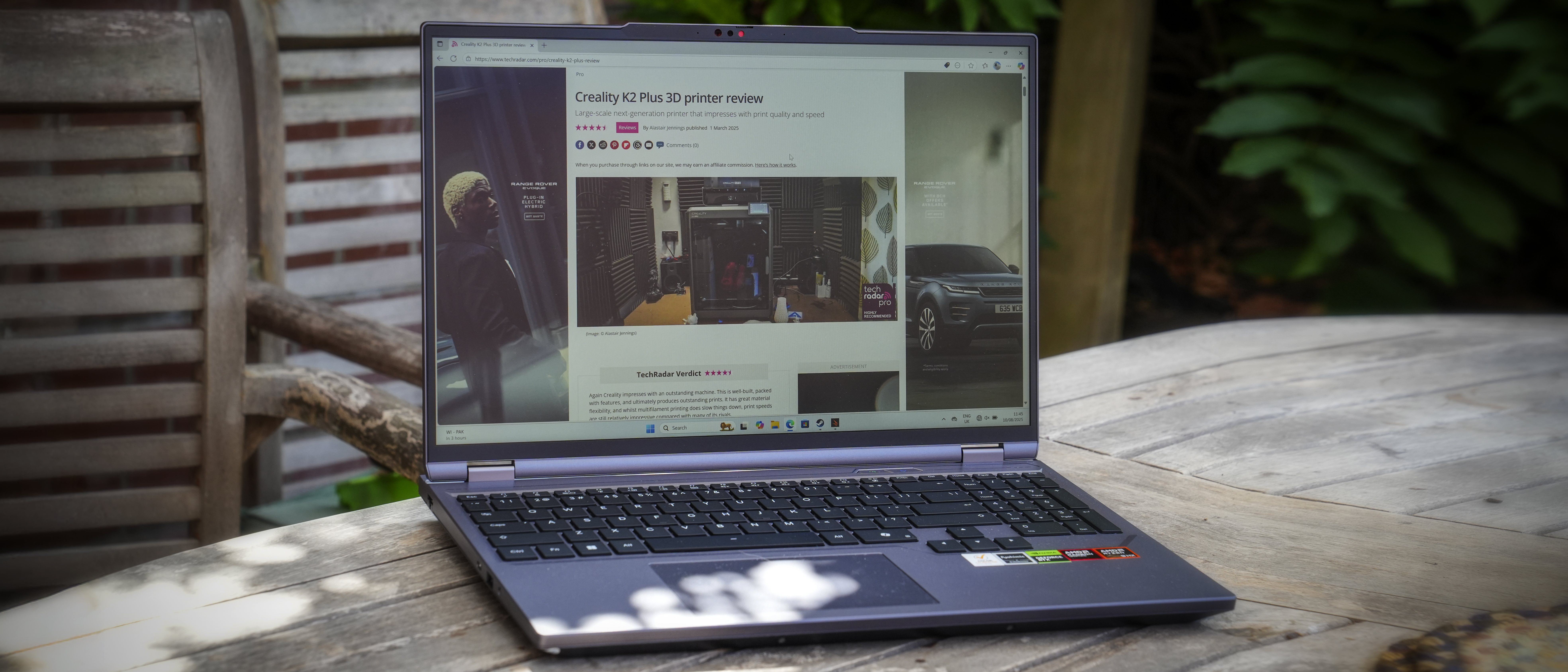TechRadar Verdict
This understated gaming laptop delivers performance on par with much pricier models, combining a powerful CPU and GPU and several power modes that enable you to tune it to meet your needs. It's ideal if you need a machine for both demanding work tasks and high-end gaming.
Pros
- +
Excellent value
- +
High-powered CPU and GPU combo
- +
Plenty of storage capacity options
Cons
- -
Relatively low battery capacity
- -
Cheaper to build than some
- -
Fans can get noisy
Why you can trust TechRadar
Dynabook Protege X40-M: 30-second review
Checking through the specifications of the Chuwi GameBook 9955HX and the CPU and GPU both hint at a high-performance laptop, just without the usual astronomical high price. Checking over the machine highlights the balance Chuwi has struck with the design and quality of the materials. While they might not match the likes of the Asus ProArt P16 and other high-end creative and gaming laptops, it still offers a good overall build quality.
Unlike other gaming laptops, Chuwi has really kept the design aesthetics reserved, so like many of the best business laptops, this machine will look equally at home, in the office, or design studio as it would in a gaming environment. With a sleek, plain top, a good array of ports around the sides and back, and the only hint that this is something different from your standard office laptop being the honeycomb design on the base.
Several key features instantly appeal when you open up the GameBook 9955HX. First and foremost is the large screen and full-size keyboard with a number pad on the right, making it ideal for anyone scouting for the best laptops for photo editing or the best laptops for video editing.
Getting into the use, Windows 11 Pro runs smoothly from the outset, with the CPU and GPU combo alongside the 32GB of RAM and 1TB SSD providing all the speed you need for all standard applications, which is proven through the PCMark scores.
Content creation, again using Premiere Pro, Adobe Lightroom, and Photoshop, showed the machine had absolutely no issues with editing 4K and even some 8K video, although expansion storage was needed. With two USB Type-C ports, you get a relatively fast connection to the machine. This is the first highlight where cost has been cut, with USB 3.2 Gen 2 used over the faster USB Type-C interfaces, meaning you only get 10GB/s, considerably lower than the later USB4 that you'd expect to see on a machine with these specifications.
However, the reduction in USB interface generation is one of the only areas where the specifications have been pared back. Internally, there is space for additional RAM and increased storage, including the PCIe 5 M.2 slot and fast connection through Wi-Fi 6E and Bluetooth 5.2 wireless connectivity options, both of which are tried and tested rather than being the latest generation.
Overall, the test showed the machine put in a great performance, with an easy access turbo power option, when you're connected to AC power, to accelerate the CPU and GPU further, giving a boost when playing games, especially. There is little not to like about the raw performance of this GameBook.
Sign up to the TechRadar Pro newsletter to get all the top news, opinion, features and guidance your business needs to succeed!
When you consider the price and what's on offer, it's hard not to be impressed with what Chuwi has managed to offer at this price.
Chuwi GameBook 9955HX: Price & availability
- How much does it cost? £1804
- When is it out? Now
- Where can you get it? Widely available
The Chuwi GameBook is available directly through the Chuwi website for £1,804, which, considering the specification including 32GB of RAM and a 1TB hard drive, is exceptional value for money.
- Value: 5 / 5

Chuwi GameBook 9955HX: Design
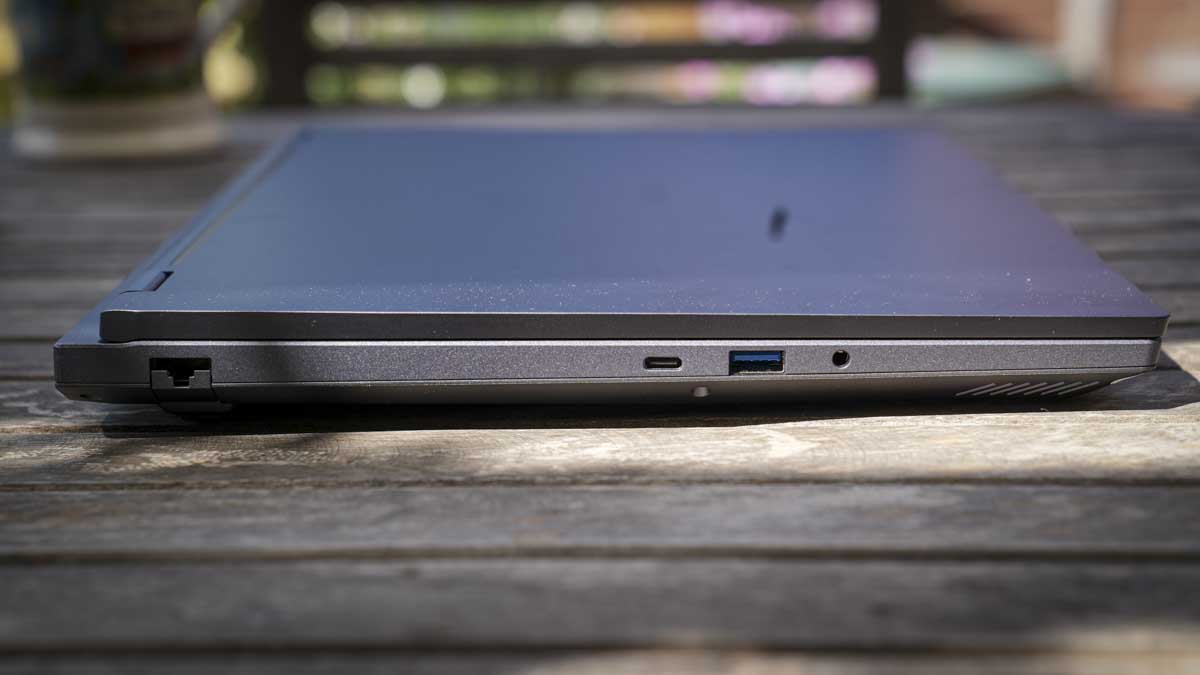
CPU: AMD Ryzen 9 9955HX (16 cores, 32 threads, up to 5.4GHz)
Graphics: NVIDIA GeForce RTX 5070 Ti Laptop GPU (12GB GDDR6)
RAM: 32GB DDR5 5600MHz (2 x 16GB, dual channel, upgradable to 64GB)
Storage: 1TB PCIe Gen4 NVMe SSD (supports two M.2 2280 slots, one Gen4, one Gen5, upgradable)
Left Ports: 2.5G RJ45 LAN, USB 3.2 Gen1 Type-A, USB 3.2 Gen 2 Type-C (supports 100W PD charging), 3.5mm audio jack
Right Ports: USB 3.2 Gen1 Type-A, Kensington lock slot
Rear Ports: HDMI 2.1 Port (Support 4K@120Hz), USB 3.2 Gen 2, Mini DP (DP2.1a, UHBR20 80Gbps)
Connectivity: Wi-Fi 6E, Bluetooth 5.2
Audio: 2W stereo speakers, Dual microphone array
Camera: 1080p IR webcam (supports Windows Hello, with physical privacy cover)
Size: 356.7 x 253.8 x 21.4 mm
Weight: 2.3kg
OS Installed: Windows 11 Pro
Accessories: 140W USB-C power adapter
Removing the Chuwi GameBook 9955HX from the box, the first thing that strikes you, especially at this price point, is just how good and robust the laptop feels, with the monitor protected in an aluminium casing, while the main body is made from a similar colour, high-impact plastic. While it doesn't give quite the same premium feel as some other laptops, it is nevertheless of decent quality.
When it comes to size and weight, because this is a gaming-focused PC requiring lots of cooling for the powerful CPU and GPU, the size and weight are slightly heavier than many work-focused laptops. It measures 356.7 x 253.8 x 21.4 mm and weighs in at 2.3kg.
Despite all that processing power and features, it's still a relatively decent-sized machine and more than portable, as I found during the process of this test.
Looking over the body of the laptop, there's a good rubber bar on the base along with two small feet to keep it securely in place on the desktop, and there's a good amount of venting on the bottom and across the back of the machine, ensuring that the powerful CPU/GPU combo stays cool.
On the left-hand side, you have a LAN port with an ingenious flip-down door design that helps partially protect the port and integrates with the design of the case. This network port is joined by a USB 3.2 Gen 2 port that enables 100W of PD power for charging when the laptop is off, and a USB Type-A Gen 1 port, alongside a standard 3.5mm audio jack.
Alongside venting at the back, there's also a USB Type-C port at up to 140W PD power again when the power is off, a mini DP 2.1 and an HDMI 2.1 port enabling 4K at 120Hz, and finally, on the right-hand side, there are two USB 3.2 Gen 1 Type-A ports and a lock slot for securing the laptop if needed.
Opening up the lid reveals the 16-inch, 2.5K (2560 x 1600), IPS, 300Hz refresh rate and up to 500 nits brightness 16:10 screen that offers a clear display for office work, content creation, as well as gaming.
One of the big features for anyone looking at this laptop for work, as well as content creation and gaming, is the full-size keyboard, even down to the four cursor keys, all full-sized with a handy numeric pad, which is slightly reduced in size, giving plenty of control and input options. While the keyboard is of decent quality, it doesn't quite have the same precise actuation that you would find with some of the more premium models.
Still, that's not to say it doesn't feel good to type on, and it is responsive. Likewise, the trackpad is a decent size and supports gesture control, again, of a decent quality, but doesn't quite have the high-end premium feel you might expect with some of the more premium laptops.
One final design feature to point out is across the top bar of the laptop, alongside gaming detailing. There is the power button, and next to this is the turbo button, which gives the laptop a power boost for gaming and other applications that need a little bit more grunt from the CPU and GPU, with an Office, Balanced and Turbo mode.
- Design: 4 / 5
Chuwi GameBook 9955HX: Features

Featuring an AMD Ryzen 9 9955HX CPU with 16 cores, 32 threads, 64MB cache and up to 5.4GHz clock speed within Zen 5 architecture, this mobile CPU is an ideal fit if you're looking for a laptop that can handle high-demand applications and games. It's supported by an impressive GPU in the form of the Nvidia GeForce RTX 5070 Ti laptop GPU, which features 12GB of GDDR7 VRAM, 140W TGP, 1406 AI TOPS, and supports full ray tracing.
Complementing the CPU and GPU is the dual-channel SODIMM RAM, and the standard machine comes equipped with 2×16GB DDR5 5600MHz modules, but you can expand this up to two 32GB sticks if required. Access to the inner workings is through the base with 11 screws needing to be removed before the base of the machine can be lifted away. From there, the layout is extremely neat and easy to work with.
For storage, the machine features two slots and comes pre-installed with a 1TB PCIe 4.0 SSD, placed in the PCIe 5.0 slot. You can also add a second M.2 2280 PCIe SSD card into the secondary slot, which is a PCIe 4.0 slot. Ideally, you buy yourself a PCIe 5.0 M.2 2280 module and insert that into the PCIe 5.0 slot to make the most of that additional speed, and place the operating system onto the PCIe 4.0 slot.
Powering the machine is a 77.77Wh battery that offers 15.4V and 5,050mAh capacity. While this is impressive considering the power draw, used for high-end gaming or content creation, battery life is going to be rather limited.
However, there has to be a balance between the size of the machine and the battery used, with a 140W AC power supply for high-demand applications. It's probably worth swapping over to AC power rather than using the battery. It's also worth noting that while there are two USB-C ports that enable PD power, this is only for use when the machine is off.
Connectivity options are as described previously, with a good range of ports, although the USB Type-C port is an older generation USB3.2 Gen 2 rather than USB4.
As you'd expect, there is a webcam built in, supporting Windows Hello face recognition. One feature I like here is that there's a physical privacy cover. It can be slid across the camera, and once it is down, the camera shows a red cover to highlight the status.
For gaming and content creation, there are two relatively powerful two-watt speakers and a dual mic on the camera. These are all of decent quality, although nowhere near the depth or clarity of sound you would expect from a premium model.
All in all, considering the price point, the features are well balanced, giving you all the power you need for high-demand applications and games, while balancing out some features, such as the USB interfaces, to manage overall cost.
- Features: 4.5 / 5
Chuwi GameBook 9955HX: Performance
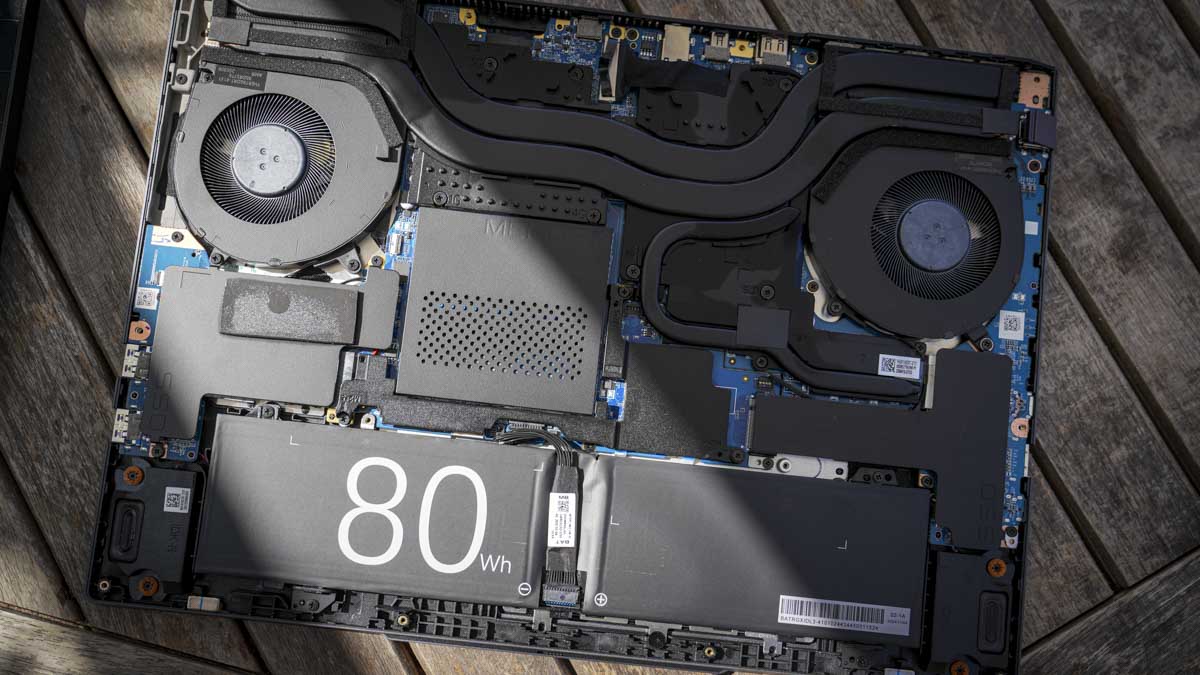
CrystalDiskMark Read: 5538.97
CrystalDiskMark Write: 5208.69
Geekbench CPU Multi: 18134
Geekbench CPU Single: 3220
Geekbench GPU: 150671
PCMark Overall: 8367
Cinebench CPU Multi: 32863
Cinebench CPU Single: 2175
Fire Strike Overall: 35793
Fire Strike Graphics: 40250
Fire Strike Physics: 37287
Fire Strike Combined: 18934
Time Spy Overall: 15855
Time Spy Graphics: 16763
Time Spy CPU: 12135
Wild Life Overall: 40003
Steel Nomad Overall: 3743
Windows Experience Overall: 8.1
The Chuwi GameBook 9955HX impresses first and foremost with the speed at which Windows boots up from cold, enabling you to load up apps and get started in a couple of minutes if not less. All Microsoft Office applications run smoothly, and if you prefer Google Docs, the wireless internet connection using Wi-Fi 6 is good and robust, with the option to hardwire into the network if you prefer. From a work perspective, this machine provides a solid foundation for standard administration software.
Through tests for Microsoft Word, PowerPoint and Excel, all applications loaded quickly, and with a large 16-inch screen in decent resolution, it's easy to navigate and update multiple documents and presentations with ease.
One of the things that stands out is the full-size keyboard. When you are used to using a MacBook Pro or similar high-end premium laptop with a reduced keyboard, the fact that it has the number pad, full-size cursors, and access to the F keys at the top just makes workflow much easier without having to use key combinations.
Moving on from the base applications and starting to look at content creation options, I loaded up Adobe Premiere Pro, Photoshop and Lightroom to see how the machine would handle an 8K video shot on a Canon EOS R5C and Sony A7 IV. The performance was superb. However, the one-terabyte SSD quickly filled up, and I was pleased to see that I could quickly pop in a secondary SSD, boosting internal storage up to 3TB.
For ease, this was installed in the secondary PCIe slot, enabling transfer rates of up to 5,000MB/s when benchmarked in CrystalDiskMark.
During the test, I checked the USB-C port transfer rate when connected to an external SSD, using a Lexar Armour 700 USB 3.2 Gen 2x2 drive. The port managed just under 1,000MB/s transfer rate, with a score of 976.27MB/s read and 968.92MB/s write, showing that this is a USB 3.2 Gen 2 interface, while not the fastest, it still delivers decent transfer rates if you need to use an external drive for video or images.
When it came to render speed from Adobe Premiere Pro, the RTX 5070 Ti did the brunt of the processing, reflected in the Cinebench scores with a CPU multi score of 32,863 and single CPU score of 2,175, which are within the range for premium creative and gaming laptops.
As testing continued, I was able to batch edit multiple images shot on the Sony A7 IV within Adobe Bridge and Photoshop, as well as apply quick changes and organise files within Adobe Lightroom. The machine rendered thumbnails and effects quickly. I was impressed with the quality of the screen, which I didn't expect to be quite as good for a laptop that's firstly gaming and secondly at this price.
Checking the quality of the screen with DataColor Spyder X2 Ultra, it was awarded an overall rating of 4.5, which is very good, scoring maximum points on both gamut and contrast, while the white point and colour uniformity both came in at 4.5. While colour accuracy was slightly down, this isn't a creative-focused laptop, but with a colour accuracy of 4, it still displayed sRGB at 100%, Adobe RGB 79%, and P3 at a respectable 81%.
Essentially, for workflow, gaming, and multimedia playback, this monitor is high quality; however, if you are looking to use this machine for critical creative work, you need to be mindful that the colours won't be 100% accurate.
For gaming, this is where it really comes into its own. While it can't compete with a dedicated desktop gaming machine, the performance afforded by the AMD Ryzen 9 HX CPU and GeForce RTX really does make it stand out, with some of the fastest benchmarking results I have seen for a laptop of this type, including a Wild Life overall score of 40,003, Fire Strike at 35,793, and Time Spy at 15,855. These are in line with premium laptops that can cost almost double what you'd pay for the Chuwi GameBook.
When it comes to performance, the display, keyboard and touchpad layout are all well considered, and while the fans do kick in under load, considering the price, that is more than acceptable.
Alongside all the hardware is the Chuwi Easy Care maintenance application, which is an in-depth dashboard for your system. It enables you to monitor the machine, the use of internal memory, and gives you access to easy driver updates, system optimisation, and the health of the system.
There are also three different power modes: Office, Balanced and Turbo, two of which can be activated when on battery power, with the third only accessible when plugged into the AC main power. The first mode is Office, taking the CPU right down to minimum, conserving power, so if you're commuting or working on battery, you can maximise battery life.
Then there's Balance, which balances CPU and fan power but gives a bit more performance, and Turbo, which can only be used when plugged into AC power and boosts overall performance, making it ideal for content creation or gaming. The most significant performance boost is when you push the turbo button, running a side-by-side test with 3D Mark Fire Strike on Office mode, it scored 34,958, switching to Balanced produced a score of 35689, and Turbo mode produced 37,417 at each stage, marking a noticeable change in performance.
What I also like is that you can go into the BIOS and select which power mode to use as default, so if you always game, you can leave it in Turbo mode, though once you're unplugged from AC, it will switch to Balanced. If you mostly work on office documents, select Office mode to maximise battery, and if you do a bit of everything, Balanced would be the one to set as default.
Chuwi has put the work into making this extremely usable, and the BIOS is testament to this. It looks modern and, for once, is easy to navigate with all the options and settings clearly laid out, and if you need to swap boot drives, change default performance modes, or anything else you'd usually do in the BIOS, it's all here and easy to find.
At the end of the test, I am impressed with just how good this laptop is for the price, its performance puts it well within the premium laptop range, yet while it's expensive, it's far cheaper than other laptops with similar specifications, and the fact that it includes some of the latest technology means that it's great for gaming and office work, as well as content creation, although you do need to check the colour accuracy for critical creative work.
- Performance: 5 / 5
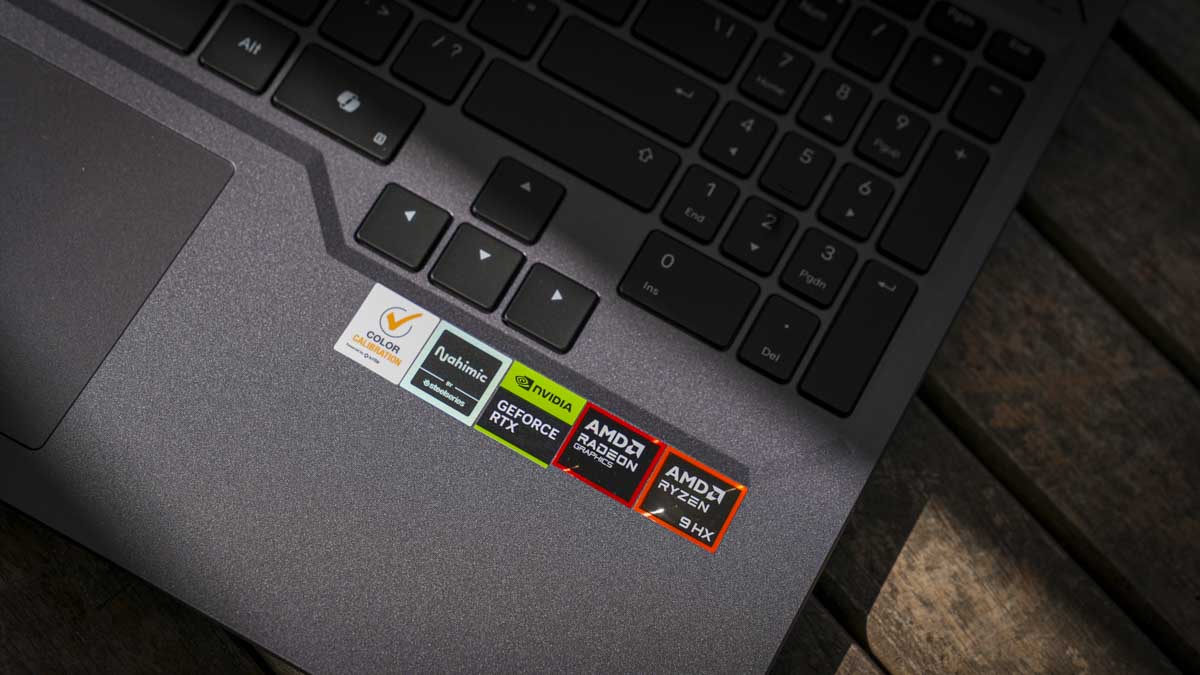
Chuwi GameBook 9955HX: Final verdict
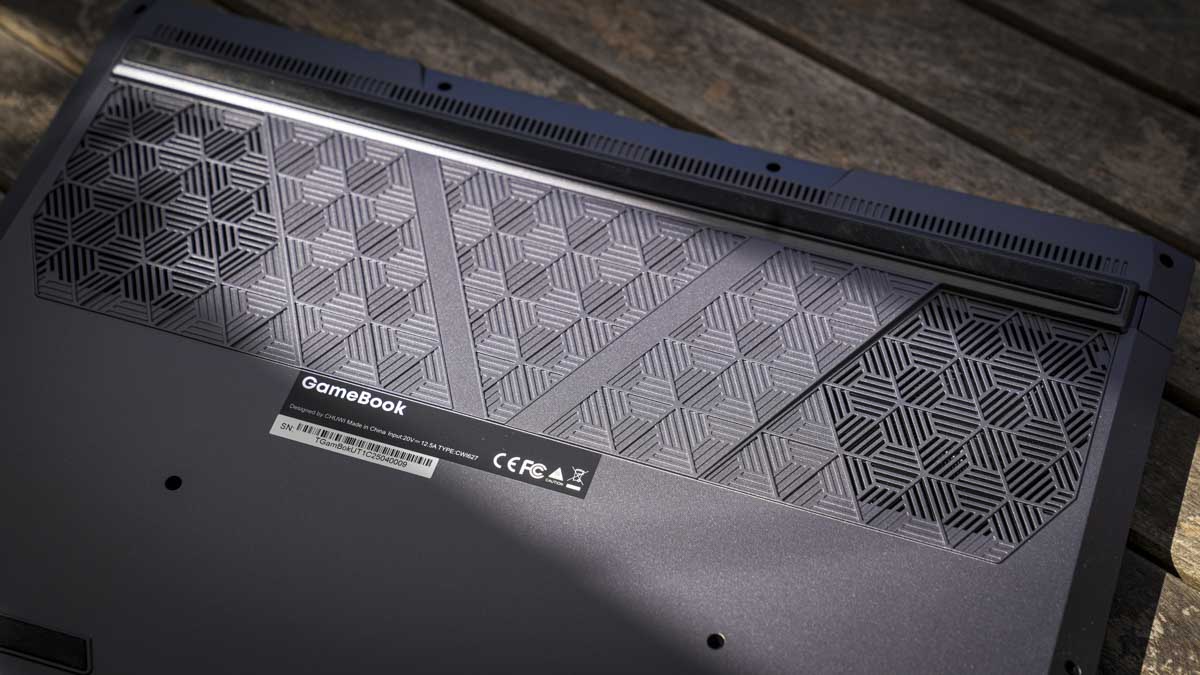
If you were to write a wish list for a high-performance laptop, the GameBook 9955HX pretty much hits almost every point. It has a large 16-inch screen which is beautifully uniform, with a slightly matte finish making it extremely viewable, and the large keyboard just makes it easy to use for office applications and gaming.
Connectivity options might be a little limited in comparison with premium laptops, for example, downgrading to USB 3.2 Gen 2 rather than USB4, but still, with a 1,000MB/s average transfer rate, it's decent.
The different power modes take it from Balance, Office to Turbo, essentially giving the machine a huge boost in power, making it ideal as you swap from low-to mid-demand applications, across to higher, and the machine just gives you that additional power needed to complete tasks that would otherwise be time-consuming on a slower machine, though there is a sacrifice in battery life.
Across the board, I've been impressed with the build quality, hardware, upgradeability, and performance. Chuwi has also included their own health management software in the form of Chuwi Easy Care to enable you to keep an eye on the overall health of the machine. If you go into the BIOS, there is a comprehensive set of options that look easy to navigate and understand, with a modern design that is a breakaway from what is more ordinarily seen on most other laptops.
As a complete solution, the GameBook is a solid option that's well priced, powerful, and offers enough to satisfy all types of users.
Should I buy a Chuwi GameBook 9955HX?
Value | Exceptional value for money for top-of-the-range CPU/GPU, usually at a much greater price | 5 |
Design | The design is a little mixed, with a high-quality monitor casing, coupled with a plastic main body | 4 |
Features | Has a good range of features that help to balance the cost of components with performance | 4.5 |
Performance | With three easy-to-access power modes, you can adjust how the machine performs to suit your needs | 5 |
Overall | Exceptional value for money with performance you expect from a premium laptop | 5 |
Buy it if...
You want a high-performance machine on a budget.
It's hard to believe you get as much as you do for the price. While it is still an expensive machine compared with rivals, it is considerably less expensive.
You want lots of storage capacity.
There are 2 x M.2 2280 SSD slots in the machine, one of which is a PCIe 5.0, giving flexibility over the internal storage, which is easily upgraded.
Don't buy it if...
You need fast external storage.
While there is USB-C, it is only USB 3.2 Gen 2, offering a maximum of 10GB per second, which might not be fast enough for some working in the creative sector.
You need colour accuracy.
While the monitor is very good when it comes to colour gamut, it is limited and really aimed at games, multimedia and general use rather than critical creative accuracy.
For more top choices, we've reviewed the best laptops for work and gaming.
Alastair is a photographer, filmmaker and tech writer who has been working in the publishing industry since the late 1990s. For more than 25 years he has covered photography, video and technology across Future's photography, technology and gaming brands. He runs a photography and video production company and lectures in TV and film. He can usually be found testing mini PCs or prototyping and prop building with the aid of 3D printing.
You must confirm your public display name before commenting
Please logout and then login again, you will then be prompted to enter your display name.
